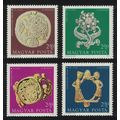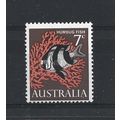Bird - King Penguins in Falkland Islands - German postcard, 1997
- Condition : Used
- Dispatch : 2 Days
- Brand : None
- ID# : 203475225
- Quantity : 1 item
- Views : 188
- Location : United Kingdom

- Seller : justthebook (+1703)
- Barcode : None
- Start : Tue 27 Jul 2021 15:02:12 (BST)
- Close : Run Until Sold
- Remain : Run Until Sold
More Listings from This Seller view all
Seller's Description
- Postcard
- Picture / Image: King Penguins, Aptendodytes patagonica, Falkland Islands / photo Frans Lanting
- Publisher: Benedikt Tashen, Germany, 1997
- Postally used: no
- Stamp: n/a
- Postmark(s): n/a
- Sent to: n/a
- Notes / condition:
Please ask if you need any other information and I will do the best I can to answer.
Image may be low res for illustrative purposes - if you need a higher definition image then please contact me and I may be able to send one. No cards have been trimmed (unless stated).
------------------------------------------------
Postage & Packing:
Postage and packing charge should be showing for your location (contact if not sure).
No additional charges for more than one postcard. You can buy as many postcards from me as you like and you will just pay the fee above once. Please wait for combined invoice. (If buying postcards with other things such as books, please contact or wait for invoice before paying).
Payment Methods:
UK - PayPal, Cheque (from UK bank) or postal order
Outside UK: PayPal ONLY (unless otherwise stated) please. NO non-UK currency checks or money orders (sorry).
NOTE: All postcards are sent in brand new stiffened envelopes which I have bought for the task. These are specially made to protect postcards and you may be able to re-use them. In addition there are other costs to sending so the above charge is not just for the stamp!
I will give a full refund if you are not fully satisfied with the postcard.
----------------------------------------------
Text from the free encyclopedia WIKIPEDIA may appear below to give a little background information (internal links may not work) :
*************
The king penguin (Aptenodytes patagonicus) is the second largest species of penguin, smaller, but somewhat similar in appearance to the emperor penguin. There are two subspecies: A. p. patagonicus and A. p. halli; patagonicus is found in the South Atlantic and halli in the South Indian Ocean (at the Kerguelen Islands, Crozet Island, Prince Edward Islands and Heard Island and McDonald Islands) and at Macquarie Island.[2]
King penguins mainly eat lanternfish, squid and krill. On foraging trips king penguins repeatedly dive to over 100 metres (300 ft), and have been recorded at depths greater than 300 metres (1,000 ft).[3]
King penguins breed on the subantarctic islands at the northern reaches of Antarctica, South Georgia, and other temperate islands of the region.
The king penguin stands at 70 to 100 cm (28 to 39 in) tall and weighs from 9.3 to 18 kg (21 to 40 lb).[4][5][6] Although female and male king penguins are monomorphic they can be separated by their calls.[7] Males are also slightly larger than females. The mean body mass of adults from Marion Island was 12.4 kg (27 lb) for 70 males and 11.1 kg (24 lb) for 71 females. Another study from Marion Island found that the mean mass of 33 adults feeding chicks was 13.1 kg (29 lb). The king penguin is approximately 25% shorter and weighs around 1/3rd less than the emperor penguin.[8][9]
At first glance, the king penguin appears very similar to the larger, closely related emperor penguin, with a broad cheek patch contrasting with surrounding dark feathers and yellow-orange plumage at the top of the chest. However, the cheek patch of the adult king penguin is a solid bright orange whereas that of the emperor penguin is yellow and white, and the upper chest tends to be more orange and less yellowish in the king species. Both have colourful markings along the side of their lower mandible, but these tend towards pink in emperor penguin and orange in king penguin. Emperor and king penguins typically do not inhabit the same areas in the wild, with the possible exception of vagrants at sea, but the two can readily be distinguished from one another by the king's longer, straighter bill and noticeably sleeker body. The juvenile king penguin with its heavy brown down is completely different in appearance from the mostly grey emperor chick. Once molted of its juvenile plumage, the king chick resembles the adult, but is somewhat less colourful.
Mounted skeleton of king penguin (Aptenodytes patagonicus)
King penguins often breed on the same large, circumpolar islands as at least half of all living penguins, but it is easily distinguished from co-occurring penguins by its much larger size and taller frame, distinctive markings and grizzled sooty-greyish rather than blackish back.[4][10][11]
King penguins breed on subantarctic islands between 45 and 55°S, at the northern reaches of Antarctica, as well as Tierra del Fuego, the Falkland Islands, and other temperate islands of the region. The total population is estimated to be 2.23 million pairs and is increasing.[4] The largest breeding populations are on the Crozet Islands, with around 455,000 pairs, 228,000 pairs on the Prince Edward Islands, 240,000–280,000 on the Kerguelen Islands and over 100,000 in the South Georgia archipelago. The King penguin population on South Georgia and the Falklands was nearly wiped out by the early 1920s by whalers on the islands who would eat the birds and their eggs, and burn the oily, blubber rich penguins as fuel. Macquarie Island has around 70,000 pairs. The non-breeding range is unknown due to many vagrant birds having been seen on the Antarctic peninsula as well as in South Africa, Australia and New Zealand.
King penguins appear to have suffered a massive population decline of nearly 90% on Île aux Cochons, or Pig Island in the Crozet Archipelago. Analysing new helicopter and satellite images from 2015 and 2017, the colony's numbers have dropped to 60,000 breeding pairs.[12] The cause of this decline may be due to changes in the ecosystem related to climate change as their primary source of food is moving farther away from places where the penguins can breed. This may result in population declines and shifts in the locations of the King penguin breeding grounds.[13]
The Nature Protection Society released several king penguins in Gjesvær in Finnmark, and Røst in Lofoten in northern Norway in August 1936. Penguins were seen in the area several times during the 1940s; though none have been officially recorded since 1949, there were a few unconfirmed sightings of penguins in the area during the early 1950s.[14]
Listing Information
| Listing Type | Gallery Listing |
| Listing ID# | 203475225 |
| Start Time | Tue 27 Jul 2021 15:02:12 (BST) |
| Close Time | Run Until Sold |
| Starting Bid | Fixed Price (no bidding) |
| Item Condition | Used |
| Bids | 0 |
| Views | 188 |
| Dispatch Time | 2 Days |
| Quantity | 1 |
| Location | United Kingdom |
| Auto Extend | No |




 for 1 item(s)
for 1 item(s)














